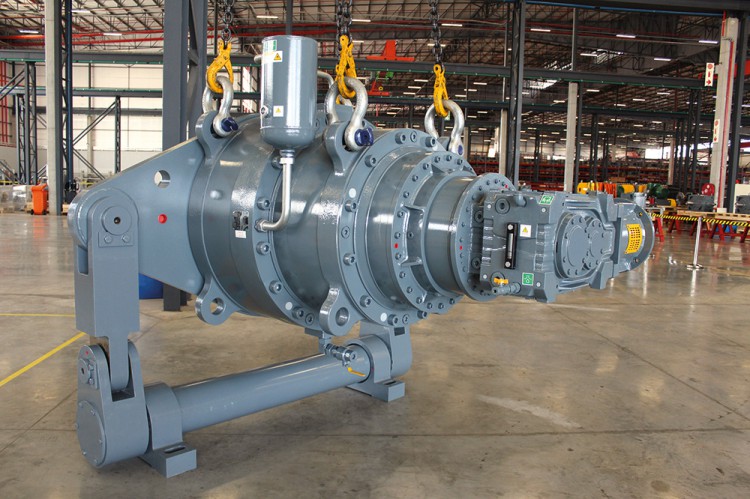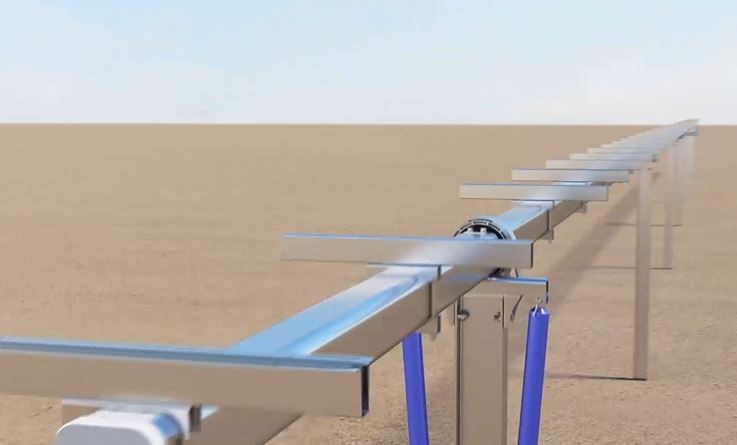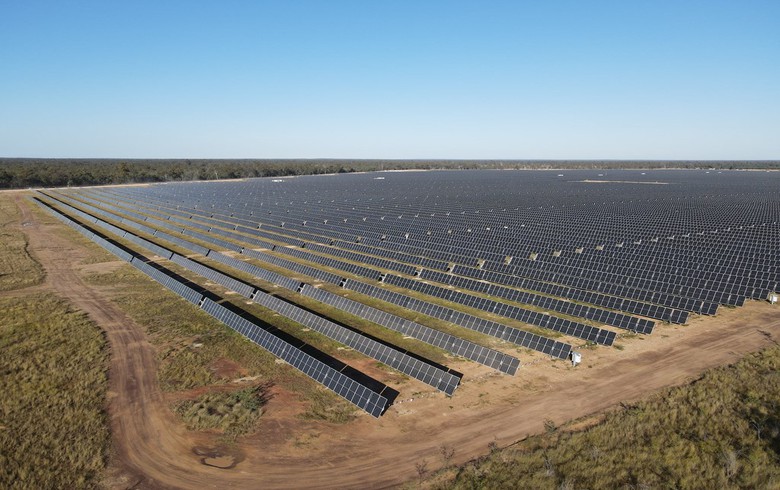
“When you look at the desert Southwest, you’re already seeing the growing pains of having so much solar on the system and having to curtail,” said Brad Albert, APS vice president of resource management. “This [project] is a necessary evolution of how we deploy slewing drive solar energy and take advantage of what we have in abundance in the Southwest.”
APS solar slewing drive didn’t set out solar damper looking for storage, per se.
This project emerged from a request for proposal that started a year ago. It was open to any technology, but the bids had to slewing drive deliver power between 3 p.m. solar inverter and 8 p.m. in the summertime.
Those are the peak hours that drive much of the new capacity investments APS will have to make in coming decades, even as the abundance of midday solar power grows.
Bids included conventional solar damper renewables, standalone batteries and natural-gas peaking plants, but First Solar’s hybrid solar-storage proposal won out.
The solar plant will charge up the battery during the day and deliver power during the first few hours of the peak window, until the sun sets. That also allows the whole project to qualify for the federal Investment Tax Credit.
Then Photovoltaic holder the battery solar tracker actuator will kick in and discharge stored power through the rest of the window. It will come with 135 solar tracker actuator megawatt-hours solar tracker actuator, providing a bit less than 3 solar inverter hours' worth of duration at the full 50-megawatt solar tracker actuator capacity level.
“For anything outside those hours of 3 p.m. to 8 p.m., APS is not buying that,” Albert said. First Solar technically has free rein to play with other revenue streams in the off-hours, provided it solar inverter can ensure capacity to deliver its obligation when the rush hour starts.
Albert declined to disclose pricing details, but it’s clear from Photovoltaic holder the timing component that this is a structural advance for solar and storage PPAs.
“We have not seen any like that,” Albert confirmed.
This project entails several notable developments for the solar-plus-storage market.
It is First Solar’s first publicly announced storage project. Recall that the thin-film specialist and largest U.S. solar developer confirmed to GTM last year that it was actively Photovoltaic holder bidding storage alongside new solar.
"We can deliver energy comparable to solar slewing drive or less expensively than a new-build fossil fuel plant,” said Scott slewing drive Rackey, head of PV-plus-storage development, at the time.
Now the company solar tracker actuator has made good on that promise, beating out gas peakers in reality, not just in theory. First Solar expects this project model to become “very common in solar damper many of our markets,” spokesperson solar damper Steve Krum said in an email.
That’s crucial for the continued growth of solar power in sunny regions that have more than they need at mid-day. Transforming solar power into a dispatchable solar inverter capacity resource solar slewing drive could allow utilities to reduce reliance on gas peaker slewing drive plants, reducing costs and carbon emissions to keep the lights on.
Arizona could adopt that model wholesale: Commissioner Andy Tobin of the Arizona Corporation Commission recently proposed an ambitious plan that would raise the state’s Photovoltaic holder clean energy share to 80 percent by leveraging storage for clean peak power.
The First Solar bid came in Photovoltaic holder well before that plan was announced, but offers a data point that suggests this model solar inverter is cost-effective even before a regulatory driver solar slewing drive comes into effect.
The project also showcases an even ratio of solar to storage solar slewing drive capacity.
Historically, paired systems had relatively Photovoltaic holder small storage capacity, because battery costs would weigh down project economics. The groundbreaking Tucson Electric Power hybrid PPA got to $45 per solar damper megawatt-hour with 100 megawatts slewing drive solar inverter of solar and 30 megawatts of solar slewing drive 4-hour storage.
The new APS project has stepped solar slewing drive a bit closer to 1-to-1. That reflects cheaper Photovoltaic holder battery costs making larger systems tenable, but it also means the value proposition is changing. Storage is no longer a nice add-on to a solar project; it played the key role in winning this solar inverter solar slewing drive bid.
 Revolutionising sugar mill efficiency: Mill Gears unveils world’s largest gearbox
Revolutionising sugar mill efficiency: Mill Gears unveils world’s largest gearbox
 who are the leaders in solar trackers for the power industry?
who are the leaders in solar trackers for the power industry?
 Trina releases new version of Vanguard 1P solar tracker
Trina releases new version of Vanguard 1P solar tracker
 GameChange Solar Tests Tracking System for 40-Year Lifespan
GameChange Solar Tests Tracking System for 40-Year Lifespan